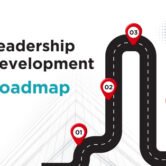The Role of Leadership Training in Organizational Growth

As businesses grow and evolve, so does the demand for capable leadership. Leadership is not merely about holding a position of authority—it’s about influencing outcomes, guiding teams through change, and shaping organizational culture. For companies that aim to remain competitive and resilient in today’s complex environment, investing in leadership training has become not just beneficial but essential.
This article explores the importance of leadership training, how it supports organizational growth, and the key components of successful leadership development programs.
Understanding Leadership Training
Leadership training is a strategic development process that equips individuals with the skills, tools, and mindset required to lead effectively. It focuses on both personal and professional growth, offering guidance on topics such as communication, decision-making, team building, conflict resolution, and strategic thinking.
These programs are typically offered through:
- Classroom-based workshops
- Online or hybrid learning platforms
- Executive coaching sessions
- Peer group discussions
- Experiential learning activities (e.g., simulations and role-play)
The scope of training can vary based on the audience—from new managers to seasoned executives—but the core objective remains the same: to build strong, confident leaders who can contribute to long-term organizational success.
Why Leadership Training Is Crucial for Organizational Growth
Leadership training has a ripple effect across every function of a business. Here’s how it directly supports growth:
1. Aligns Teams with Vision and Strategy
One of the most powerful benefits of leadership training is improved alignment between leadership and business objectives. Trained leaders understand how to translate the company’s vision into actionable strategies. They help their teams connect daily tasks to broader goals, which enhances motivation and clarity across the organization.
2. Improves Employee Engagement and Retention
Employees don’t leave companies—they leave poor managers. Effective leadership creates a culture of trust, inclusion, and accountability. When leaders are trained to support, coach, and develop their teams, it significantly improves job satisfaction, loyalty, and retention rates.
3. Strengthens Internal Talent Pipelines
Relying solely on external hiring for leadership roles can be risky and costly. Leadership training develops existing employees into future-ready leaders. This internal growth strategy supports succession planning and reduces the learning curve when roles shift or expand.
4. Encourages Innovation and Problem-Solving
Training encourages leaders to adopt a growth mindset, challenge existing processes, and foster a culture of innovation. Leaders trained in adaptive thinking are more comfortable with experimentation and better equipped to manage ambiguity and change—both critical to innovation.
5. Promotes Organizational Agility
Markets change, technologies evolve, and business models shift. Leaders who receive structured training are better prepared to make swift, confident decisions in volatile environments. This agility allows organizations to respond to disruption without losing momentum.
Essential Elements of High-Impact Leadership Training
The most effective leadership development programs share a few key features that ensure sustained impact:
● Self-Awareness and Emotional Intelligence
Great leaders understand themselves before leading others. Training often begins with self-assessments and feedback tools (such as 360-degree reviews) to develop emotional intelligence, empathy, and self-regulation.
● Communication and Influence Skills
Leaders must be able to clearly articulate vision, manage conflict, and inspire others. Training helps participants refine their verbal and nonverbal communication styles to become more persuasive and inclusive.
● Decision-Making Frameworks
Leadership involves constant decision-making under pressure. Training introduces structured methods to evaluate risks, analyze data, and make timely, effective choices.
● Team Building and Coaching
Leaders are multipliers—they improve team performance by empowering others. Programs focus on delegation, collaboration, motivation techniques, and how to coach for growth rather than just direct.
● Strategic Thinking and Execution
Being able to “zoom out” and think long-term is vital. Training often includes case studies, scenario planning, and exercises that enhance the ability to align team efforts with the broader business strategy.
● Leading Change
Change is inevitable. Leadership training builds confidence in guiding teams through transitions by addressing resistance, communicating clearly, and modeling the behaviors needed for successful change.
How to Measure Leadership Training Effectiveness
To ensure leadership training delivers tangible results, organizations need to track performance both during and after the program. Key metrics include:
| Area | Measurement Example |
| Team Productivity | Increased KPIs post-training |
| Employee Engagement | Higher scores on satisfaction surveys |
| Internal Promotions | Greater number of leadership roles filled internally |
| Turnover Reduction | Lower attrition rates in trained teams |
| Innovation Initiatives | More new ideas or pilot projects led by trainees |
In addition to quantitative metrics, qualitative feedback from participants and stakeholders is vital. Reflection journals, peer reviews, and manager feedback can help organizations evaluate how well the training translates into action.
Implementing a Leadership Training Strategy
Creating a leadership development plan doesn’t happen overnight. It requires a thoughtful, multi-step approach:
Step 1: Define the Business Goals
What challenges is the organization trying to solve? Whether it’s improving culture, preparing for growth, or navigating change, training should align directly with those priorities.
Step 2: Assess Current Capabilities
Conduct skills assessments, feedback surveys, and interviews to identify where leadership gaps exist and what competencies are needed at each level.
Step 3: Design Tiered Programs
Not all leaders are at the same stage. Offer targeted programs for:
- First-time managers (e.g., team dynamics, feedback basics)
- Mid-level leaders (e.g., influence, cross-functional collaboration)
- Senior leaders (e.g., enterprise strategy, organizational design)
Step 4: Integrate On-the-Job Application
Ensure that learning is applied in real-time through stretch assignments, mentoring, and action learning projects.
Step 5: Evaluate and Adapt
Continuously monitor results, collect feedback, and refine the program as organizational needs change.
Final Thoughts
Leadership training is more than just a professional development activity—it’s a cornerstone of organizational excellence. When leaders are empowered with the right skills, the benefits cascade across every team, department, and customer interaction.
In today’s ever-evolving environment, the question is no longer “Should we invest in leadership training?” but rather “Can we afford not to?” By taking a strategic, tailored, and consistent approach, organizations can unlock the full potential of their people—and in doing so, fuel sustainable growth.










